Zen Organics products do not contain the following ingredients due to their toxic, allergenic, carcinogenic, or other harmful properties. Here are just a few of the most commonly used, toxic ingredients.

Toxic and Cancer Causing Ingredients
FIVE MOST COMMON TOXIC INGREDIENTS YOU NEED TO AVOID
- Parabens (methyl, propyl, ethyl, and butyl) or PHB Esters
- Urea, Imidazolidinyl & DMDM Hydantoin (Germal and Germal II)
- TEA (Triethanolamine)
- FD&C Color Pigments
- Fragrances (Perfume)
Parabens (methyl, propyl, ethyl, and butyl) or PHB Esters:
These toxic, allergenic chemicals are among the most common synthetic cosmetic preservatives. Parabens are recognized causes of severe and intractable contact dermatitis. Patients sensitive to one paraben show cross-sensitivity to others. Parabens are often used as a spermicide and the four most widely used parabens (as above) are all found to be weakly estrogenic (mimic estrogen in the body). This discovery points to potential negative effects on a fetus during pregnancy where a paraben may act like a foreign female hormone. Products containing protein and preserved with parabens have been found to contain microorganisms, even when the PHBs were used in high concentrations and the products appeared to be bacteria-free. This means that PHBs can’t be safely used in any skin care product that contains collagen, elastin, keratin, etc.
Imidazolidinyl & DMDM Hydantoin Urea (Germal and Germal II):
These preservatives are known to release formaldehyde which is a known carcinogen (cancer causing agent). Formaldehyde weakens the immune system and can contribute to joint pain, skin reactions, allergies, depression, headaches, chest pains, ear infections, chronic fatigue, dizziness and loss of sleep. Exposure may also irritate the respiratory system, trigger heart palpitations or asthma, and aggravate coughs and colds.
TEA (Triethanolamine), DEA (Diethanolamine), & MEA (Monoethanolamine):
These common cosmetic preservatives are hormone-disrupting chemicals that can form cancer causing (carcinogenic) nitrates and nitrosamines. These chemicals are restricted in Europe due to known carcinogenic effects. The average American may be exposed to this chemical 10-20 times a day while using common products such as soap, shampoo, lotion, shaving cream and bubble bath. Dr. Samuel Epstein (Professor of Environmental Health at the University of Illinois) says that repeated skin applications of DEA-based detergents resulted in a major increase in the incidence of liver and kidney cancer. The FDA’s John Bailey says this is especially important since the risks become significantly higher for children.
FD&C Color Pigments:
These synthetic petroleum products are made from coal tar. They contain heavy metal salts that are toxic and irritating to the skin. Most artificial colors are carcinogenic (cancer causing) and absorption of certain colors can cause oxygen depletion and even death.
Fragrances (Perfume):
Most fragrances and perfumes are synthetic petroleum bi-products, even the ones that claim natural fragrance. The word fragrance can indicate the presence of up to four thousand separate ingredients. Many of these ingredients are toxic or carcinogenic (cancer causing). Symptoms reported to the FDA include headaches, dizziness, allergic rashes, skin discoloration, violent coughing and vomiting, and skin irritation. Clinical observation proves fragrances can affect the central nervous system, causing depression, hyperactivity, irritability, inability to cope and other behavioral changes.
Sodium Lauryl Sulfate (SLS) & Sodium Laureth Sulfate (SLES):
These detergents and surfactants pose serious health threats. They are used in car washes, garage floor cleaners and engine degreasers- and in 90% of personal care products that foam. Animals exposed to SLS experience eye damage, depression, labored breathing, diarrhea, severe skin irritation, and even death. Young eyes may not develop properly if exposed to SLS because proteins are dissolved. SLS may also damage the skin’s immune system by causing layers to separate and inflame. When combined with other chemicals, SLS can be transformed into nitrosamines, a potent class of carcinogens. Your body may retain the SLS up to five days during which time it may enter and maintain residual levels in the heart, liver, the lungs and the brain.
Mineral Oil:
Mineral oil is a comedogenic (pore clogging) petroleum bi-product and a known carcinogen (cancer causing agent). It interferes with the skin’s ability to eliminate toxins, promoting acne and other disorders. It also slows down skin function and cell development, resulting in premature aging. Baby oil is 100% mineral oil.
Grapefruit Seed Extract:
Natural ingredients are traditionally used for natural and organic cosmetic companies. However, coming from nature does not always mean non toxic. Many fruit seed families are very toxic. As many people know, 1/4 cup of apple seed can be a lethal dose, if ingested. Grapefruit seed extract contains cyanide and is not safe to use as a preservative. This is a prime example that many product ingredients coming from nature or considered to be “natural” are quite toxic to humans.
A recent report released by the Centers for Disease Control and Prevention in Atlanta stated that many adults have high levels of toxic chemicals in their bodies because of synthetic ingredients in many personal care products.
Natural Foods Merchandiser Magazine, June 2001
Typical preservatives used in the cosmetic industry include methylparaben, ethylbaraben and propylparaben and their derivatives. They disable enzyme activity (in the bacterial wall) to prevent fungal contamination. This action continues when the product travels into the skin tissue, then on to the blood stream, and ultimately residing in the major organs. The preservative action is so stable, it continues to work while inside the body, limiting the normal enzyme activity of the body. How do we know this? Autopsies performed on cancerous tumors have shown residues of methyl-, ethyl- and propylparabens.
Household and Personal Products Industry Magazine, September 2002
NO Imidazolidinyl & DMDM Hydantoin Urea (Germal and Germal II):
These preservatives are known to release formaldehyde which is a known carcinogen (cancer causing agent). Formaldehyde weakens the immune system and can contribute to joint pain, skin reactions, allergies, depression, headaches, chest pains, ear infections, chronic fatigue, dizziness and loss of sleep. Exposure may also irritate the respiratory system, trigger heart palpitations or asthma, and aggravate coughs and colds.
NO Hydroquinone:
One of the most toxic and carcinogenic ingredients in the cosmetic industry, used to bleach or balance the pigment for freckles and age spots. The CIR Expert Panel reports that: It’s toxicity is so high that death has occurred from the ingestion of as little as 5 grams. Ingestion of as little as one gram has caused nausea, vomiting, ringing in the ears, delirium, a sense of suffocation, and collapse. When tested on rodents, it has caused atrophy of the liver, aplastic anemia and bladder cancer.



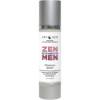 Aftershave Splash - Bergamot & Orange - 3.4 ozSpecifically designed for a man’s face, Cooling Aftershave Splash heals, neutralizes, and moisturizes skin. Enriched with Aloe, Green Tea, and Pure Essential Oils.
Aftershave Splash - Bergamot & Orange - 3.4 ozSpecifically designed for a man’s face, Cooling Aftershave Splash heals, neutralizes, and moisturizes skin. Enriched with Aloe, Green Tea, and Pure Essential Oils.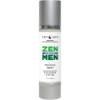 Aftershave Splash - Tea Tree & Lime - 3.4 ozSpecifically designed for a man’s face, Cooling Aftershave Splash heals, neutralizes, and moisturizes skin. Enriched with Aloe, Green Tea, and Pure Essential Oils.
Aftershave Splash - Tea Tree & Lime - 3.4 ozSpecifically designed for a man’s face, Cooling Aftershave Splash heals, neutralizes, and moisturizes skin. Enriched with Aloe, Green Tea, and Pure Essential Oils.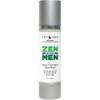 Deep Cleansing Facial Wash - Tea Tree & Lime - 3.4 ozEnhanced with, Vitamin E, A, and B-5, Botanical Extracts and Pure essential oils. Use each morning and night as part of your daily skin care regimen.
Deep Cleansing Facial Wash - Tea Tree & Lime - 3.4 ozEnhanced with, Vitamin E, A, and B-5, Botanical Extracts and Pure essential oils. Use each morning and night as part of your daily skin care regimen.
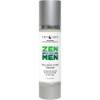 Face, Body & Hair Cleanser - Tea Tree Lime - 3.4 ozEnhanced with, Vitamin E, A, and B-5, Botanical Extracts and Pure essential oils. Use each morning and night as part of your daily skin care regimen.
Face, Body & Hair Cleanser - Tea Tree Lime - 3.4 ozEnhanced with, Vitamin E, A, and B-5, Botanical Extracts and Pure essential oils. Use each morning and night as part of your daily skin care regimen.
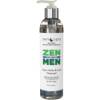 Face, Body & Hair Cleanser - Tea Tree Lime - 8 ozEnhanced with, Vitamin E, A, and B-5, Botanical Extracts and Pure essential oils. Use each morning and night as part of your daily skin care regimen.
Face, Body & Hair Cleanser - Tea Tree Lime - 8 ozEnhanced with, Vitamin E, A, and B-5, Botanical Extracts and Pure essential oils. Use each morning and night as part of your daily skin care regimen.
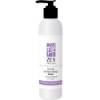 Therapeutic Lavender Massage Cream - 8 ozDual-Action massage cream provides superior glide for all professional massage therapy demands. You and your clients benefit from a skin-nourishing organic herbal blend with multi-vitamins infused in our Dual-Action massage cream. Try using about half the amount of Zen Organics Dual-Action massage cream as you would any other brand. Our Dual-Action massage creams tend to require less cream per treatment which is more cost effective for your daily practice. So, make your choice, Zen Organics.
Therapeutic Lavender Massage Cream - 8 ozDual-Action massage cream provides superior glide for all professional massage therapy demands. You and your clients benefit from a skin-nourishing organic herbal blend with multi-vitamins infused in our Dual-Action massage cream. Try using about half the amount of Zen Organics Dual-Action massage cream as you would any other brand. Our Dual-Action massage creams tend to require less cream per treatment which is more cost effective for your daily practice. So, make your choice, Zen Organics.
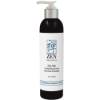 Zero Pain with Arnica and Boswellia - 8 ozZero Pain is a cooling herbal massage lotion with amazing effects. This powerful muscle relieving lotion penetrates rapidly to sooth sore muscles and relieve aching joints with MSM, which is proven to reduce inflammation. Every athlete should have a bottle in their gym bag.
Zero Pain with Arnica and Boswellia - 8 ozZero Pain is a cooling herbal massage lotion with amazing effects. This powerful muscle relieving lotion penetrates rapidly to sooth sore muscles and relieve aching joints with MSM, which is proven to reduce inflammation. Every athlete should have a bottle in their gym bag.




